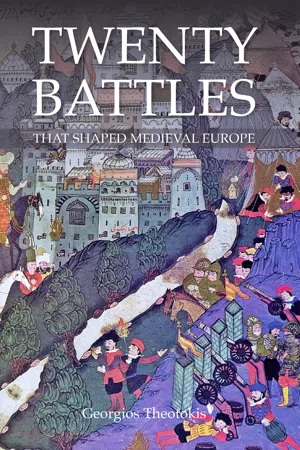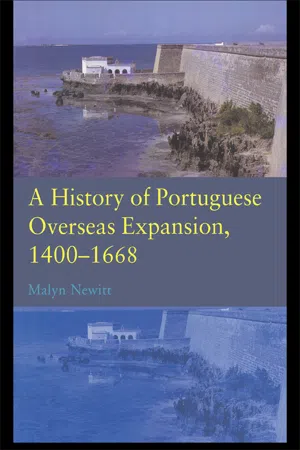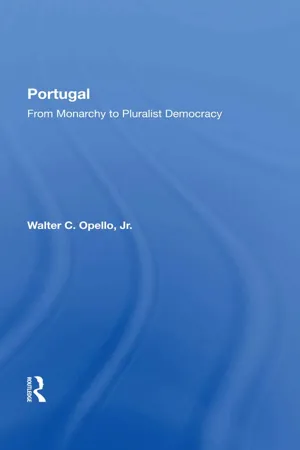History
Treaty of Alcacovas
The Treaty of Alcacovas, signed in 1479, marked the end of the War of Castilian Succession between Portugal and Castile. It established peace and defined territorial boundaries, with Portugal gaining control of the Azores, Madeira, and Cape Verde islands. The treaty also recognized Isabella I as the rightful queen of Castile, solidifying her position as a powerful monarch in Spain.
Written by Perlego with AI-assistance
Related key terms
Related key terms
1 of 4
Related key terms
1 of 3
3 Key excerpts on "Treaty of Alcacovas"
- eBook - ePub
- George Theotokis(Author)
- 2019(Publication Date)
- Robert Hale(Publisher)
Following the surrender of Silves to Abu Ya’qub, the Christian kings concluded a series of truces with the Almohad caliph, allowing them to resume their bitter territorial rivalries. These truces lasted until 1194, after which year Archbishop Martin of Toledo and the Knights of Calatrava ravaged the Guadalquivir, in central Andalucía. Abu Ya’qub was provoked even further by the building of the fortress of Alarcos, north of the strategic Despeñaperros Pass that connects Andalucía and Castile, by Alfonso VIII of Castile in 1194. The Christian aggression resulted in the Almohad invasion of Castile, culminating in the Battle of Alarcos (19 July 1195) fought between Abu Yusuf Ya’qub and King Alfonso VIII of Castile. It resulted in the defeat of the Castilian forces and their subsequent retreat to Toledo.After the defeat at Alarcos, the Christian kings continued to quarrel, and were prepared to agree on alliance treaties with the enemy, to the dismay of the Popes. A period of Almohad dominance would last for some twenty years after the Battle of Alarcos. In the spring of 1196, the Almohads ravaged the Tagus valley, while Alfonso IX of León (reigned 1188–1230) was plundering western Castile with Almohad money. This action led to Alfonso’s excommunication by Pope Celestine III (papacy, 1191–98), who also instructed the archbishops of Toledo and Compostela to rouse the people to take up arms against their king. A plundering expedition in the Tagus valley, led by Abu Ya’qub, ended in a ten-year truce with Alfonso VIII of Castile, once again enabling the Christian kings to continue their quarrels.Map of the Iberian peninsula around AD 1150.Nevertheless, the crusading spirit had been growing steadily in Aragon and Castile following the Christian disaster at Alarcos. Pedro II of Aragon, probably late in 1203, notified Pope Innocent III (papacy, 1198–1214) of his aspiration to make war against the Almohads. He went as far as to offer his kingdom to the papacy, and agreed to hold it in vassalage to Rome. After the truce with the Almohads expired, the new caliph Abu ‘Abd Allah al-Nasir (reigned 1199–1213) crossed the Straits of Gibraltar in May 1211, intent on making war against the king of Castile. In July he marched north through the Despeñaperros Pass, invading Castile and besieging the headquarters of the Order of Calatrava, the castle of Salvatierra, some 40km (25 miles) north of the pass.The castle surrendered in early September, while in the following winter months the word spread around the Catholic core of Europe for a crusade to be launched against the Almohads. Innocent III appealed to the bishops of France and Provence, and offered remission of sins to everyone who would participate in the crusade or provide financial support. Then Archbishop Rodrigo of Toledo was sent to southern France to request urgent military assistance from the French aristocrats. - Malyn Newitt(Author)
- 2004(Publication Date)
- Routledge(Publisher)
cruzados. It had been a relatively easy decision for Charles to make because, although a two-month voyage across the Pacific meant that the Moluccas were relatively speaking close to Castilian territory, it had been found that the prevailing winds in the southern Pacific prevented a passage back to South America. The new agreement with Portugal was finally concluded in 1529 and enshrined in the Treaty of Zaragoza. This treaty, the third of the partition treaties between Castile and Portugal, left the Far East firmly within Portugal’s jurisdiction and ended, for a generation, the Castilian challenge. It was only when it was discovered that a return voyage across the Pacific was possible by sailing northwards and crossing in the latitude of California that Castile once again turned its attention seriously to this region.Meanwhile the Portuguese had already begun to expand their activities in eastern Indonesia. Although cloves remained the most lucrative item of commerce, the Portuguese also traded in nutmeg, mace and sandalwood, and unofficial settlements grew up on Ambon, Solor and Flores.19This expansion was largely the work of private traders and missionaries and was not directly promoted by the government of the Estado da India, though the fort at Ternate served to maintain the Crown’s interest in the region and official voyages were organised in the Crown’s name from Malacca to the Moluccas.The official empire IV: the development of Portuguese society in the eastern fortresses
The death of Albuquerque in 1515 meant that a strong hand was removed from the control of eastern affairs. The Estado da India was now stretched out over thousands of miles of sea. It comprised fortresses, factories, and large numbers of ships, some of them permanently stationed in the East and some tied to the schedules of the carreira da Índia- eBook - ePub
Portugal
From Monarchy To Pluralist Democracy
- Walter C Opello Jr(Author)
- 2019(Publication Date)
- Routledge(Publisher)
During the reign of Afonso IV (1325–1357) conflict broke out between Portugal and Castile, to which the Portuguese crown was still tied by vassalage. This conflict resurfaced after a peaceful interlude during the rein of Pedro (1357–1367), Afonso IV’s son and heir. When in 1383 Pedro’s son, Fernando, died, he left no heir to the throne. His only child, Beatriz, was married to Juan I of Castile on the provision that their offspring would inherit the Portuguese crown. At Fernando’s death, the government fell to his queen, Eleanor Teles, a Spaniard who was seen as an interloper and was consequently unpopular. The queen’s principal rival for control was Fernando’s bastard son, João, who was the master of the Order of Avis, the Portuguese section of the Knights of Calatrava. Civil war and dynastic revolution ensued. João and his supporters, principally from southern Portugal, where the Knights of Calatrava were situated, drove Teles from Portugal. This action precipitated an invasion by Castilian forces who found support in the north, where there was much sentiment for the legitimist cause. From 1383 to 1384 fighting between Portuguese and Castilian forces waxed and waned, neither side able to deal a decisive blow to the other. Finally, in the summer of 1385, the war reached a climax when fewer than 7,000 Portuguese under the command of João’s skillful military leader Nun’Alvares Pereira, aided by a contingent of English longbowmen, inflicted a crushing defeat on the imposing Castilian army of 10,000 infantry and 20,000 cavalry on the plain of Aljubarrota. This defeat ended the Burgundian line of kings and established a new ruling dynasty in Portugal, the house of Avis. Random hostilities between Portugal and Castile continued until permanent peace was established in 1411.The Portuguese had been able to assert themselves over their more powerful neighbor because of English help. In order to ensure Portugal’s future independence, João (1384–1433) decided to solidify the relationship with England. This he did by signing the Treaty of Windsor in 1386, and by taking as his queen in 1387 Philippa of Lancaster, the daughter of John of Gaunt. Philippa introduced an English style into the court and provided royal patronage to English commercial interests. She was also the mother of an extraordinary line of princes, the most well known of whom was Dom Henriques (Prince Henry the Navigator). These princes, called the “marvelous generation” by the poet Camões, led Portugal into its golden age, the age of the discoveries.Voyages of Discovery
With the question of independence from Castile settled and a new ruling dynasty on the throne, Portugal embarked on new fields of conquest. In 1415 Portuguese troops captured the town of Ceuta in Morocco. Shortly thereafter Portuguese navigators began to explore the uncharted waters of the Atlantic. In 1419 João Gonçalves Zarco discovered the archipelago of Madeira and subsequently undertook its colonization. In 1427 Diogo de Silves found the archipelago of the Azores, which was also colonized. In 1434 Gil Eanes rounded Cape Bojador and explored the mouth of the Gambia River. These early efforts at exploration and colonization proved to be highly profitable and encouraged the organization of further voyages.The voyages of discovery were made possible because Portugal possessed a sense of national unity and purpose well ahead of other, more powerful European proto-nation-states; was led by the strong visionary leadership of the early kings of the Avis line; and enjoyed a superiority in maritime and navigational technology embodied in the small, fast, lateen-rigged caravela (caravel). The voyages were driven by a mixture of economic, strategic, and religious motives. Economically, Portugal wanted to obtain the spices and luxury goods from the Orient that were in high demand among the European nobility at the time. Strategically and religiously, the Portuguese were fearful of the rise of Moslem power in the southeast of the Mediterranean and consequently sought to outflank it by sea. The principal strategic objective was to contact and make an alliance with the mythical Christian kingdom of Prester John, thought to be located somewhere in the vicinity of Ethiopia. To achieve these objectives, Prince Henry established a maritime school on a promontory at Sagres, where he trained Portuguese captains and planned voyages from 1437 until his death in 1460.
Index pages curate the most relevant extracts from our library of academic textbooks. They’ve been created using an in-house natural language model (NLM), each adding context and meaning to key research topics.
Explore more topic indexes
Explore more topic indexes
1 of 6
Explore more topic indexes
1 of 4


